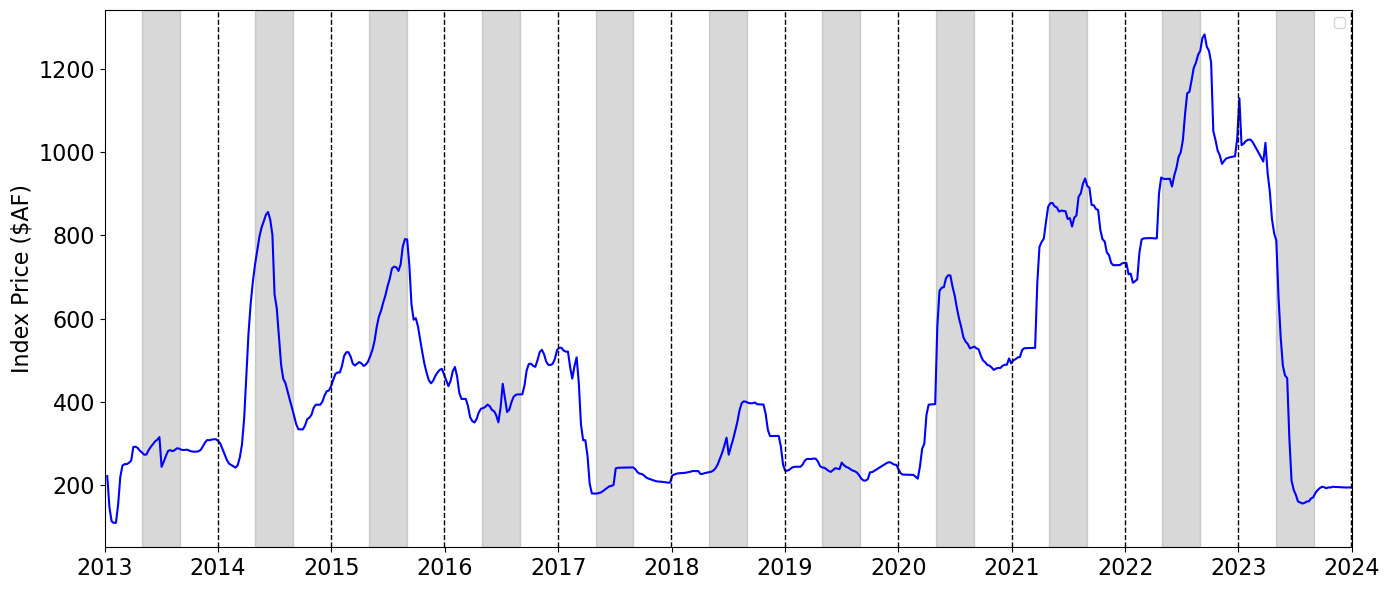Water Issues - A Financial Perspective
Since the dawn of human civilization, we have competed for resources, and those who succeed in securing them are able to grow their communities and enhance their competitive edge. Among these resources, water is not only essential for human survival but also crucial for economic, agricultural, and technological development. As the famous saying goes, “Whoever controls the water, controls the West.” In this post, I want to discuss the issue of water scarcity and explore whether financial solutions can effectively address this challenge.
Institutional Complexity of California’s Water System
Navigating California’s water system is like solving a unique puzzle. The state’s water rights are governed by a dual system: riparian and appropriative rights. Riparian rights let those with land next to water use it, while appropriative rights follow a “first come, first served” rule, regardless of where your land is.
Now, throw in California’s geography, and things get even more interesting. Most of the water is up north, thanks to those impressive mountain ranges storing it all. But here’s the kicker: the south, with its desert vibes, is where you’ll find bustling hotspots like Los Angeles and Hollywood. It’s a real head-scratcher-how do these thriving areas keep going in such a dry zone? This is the heart of California’s water conundrum: figuring out how to quench the thirst of its most vital regions that naturally lack water.
California’s Agricultural Economy
Many people might not realize that California boasts the largest agricultural output of any state in the U.S. It produces high-value crops like almonds and pistachios, which are almost exclusively grown in California, meeting 99% of the nation’s demand. But behind this agricultural success story is a complex challenge: managing water, especially given the state’s intricate water rights system.
California’s water resources are subject to periodic droughts and floods, making effective management a constant challenge. For example, in 2023, Tulare Lake, a “zombie lake” reemerged after disappearing 130 years ago due to one of the wettest years on record. The current infrastructure struggled to handle the excess water, leading to significant flooding in the Tulare Basin’s farmlands, where many high-value crops are cultivated. This highlights the ongoing struggle to balance water supply with agricultural demands in California.
Navigating the Ups and Downs of Cash Flow in California’s Water World
For water users like irrigation districts and major metropolitan areas, the rollercoaster ride of water supply can mean big headaches: reduced revenue and skyrocketing costs. When drought hits and water is scarce, the state simply allocates less to contractors. This includes major urban centers like Los Angeles and agricultural irrigation districts. During these dry years, cities receive less water, and irrigation districts struggle to sell enough water to large-scale farms. They often have to turn to the often expensive spot market to meet demand.
Consider the Nasdaq Veles California Water Price Index (NQH2O) -an index for tracking water costs in the state. During the exceptionally dry year of 2022, prices soared to $1,200 per acre-foot, six times higher than in wetter years! You can imagine the financial strain on cities and farms. Beyond just higher bills, these pressures can result in staff layoffs, reduced spending on critical infrastructure maintenance, and potentially lead to credit rating downgrades and increased borrowing costs when districts and cities issue debt.

So, how do they manage this financial tightrope? Stability is key, and some solutions include using financial derivatives like futures and options to lock in prices or purchasing insurance to guard against extreme losses. Of course, these strategies depend heavily on accurately predicting hydrologic conditions and understanding the financial implications - a topic I’m diving into in my upcoming papers. Stay tuned!